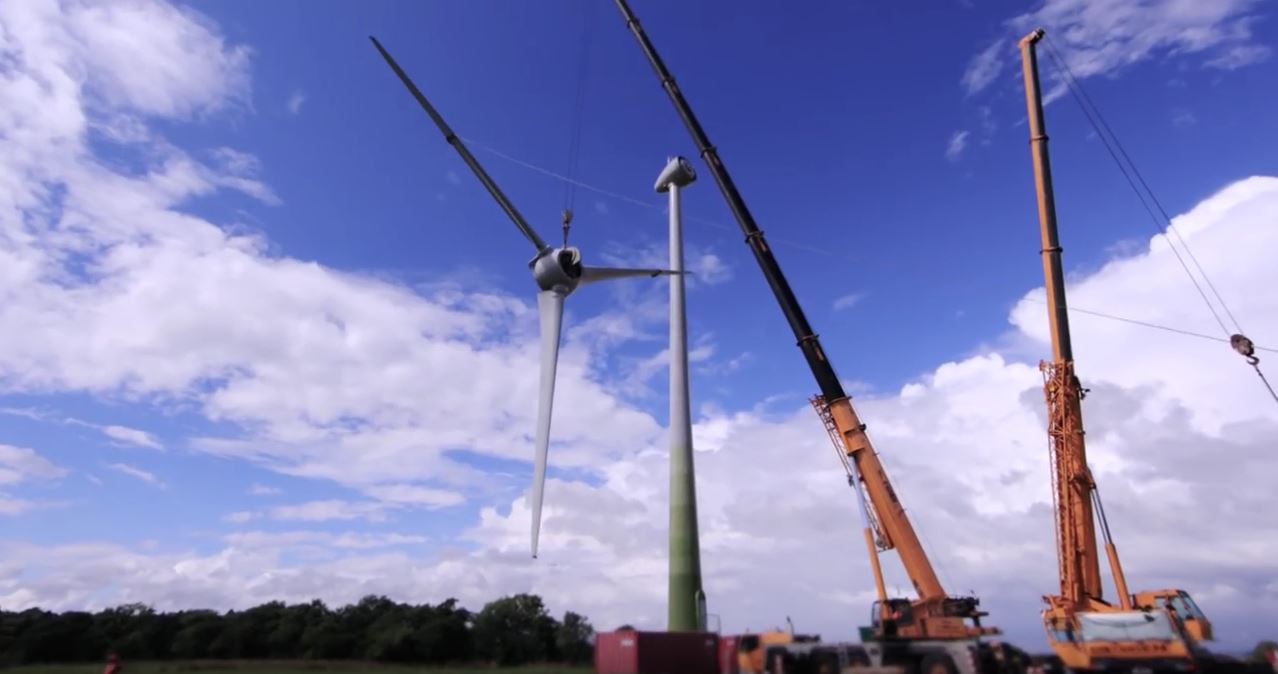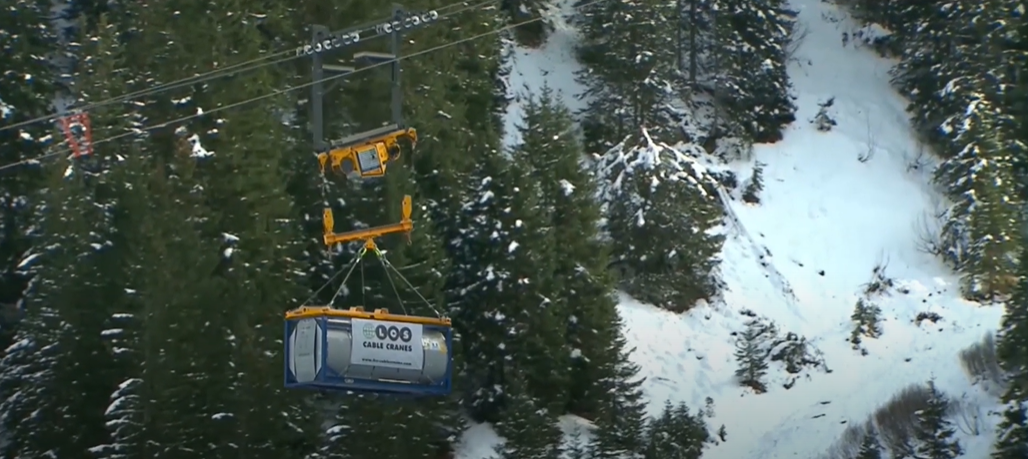Wind has been used for over a thousand years, with the first known windmill built between 500-900 AD in Persia (known as Iran, today). For centuries to come, wind would be used to power grain mills and scoop up water out of a river or stream. Surprisingly, the first windmill, or wind turbine, to actually produce electricity was built way back in 1887 in Scotland. Inventor James Blyth used the turbine to power his vacation home.
Now, wind turbines for electricity are slowly gaining in popularity, but the race is on to see who can make them more and more efficient. Just like solar power, not all of the energy gained from wind can be used.
How do Wind Turbines Work?
Wind turbines are obviously more suitable to windy environments, as it uses the wind to turn its blades. The blades typically rotate at 18 RPM, which is pretty slow, so a series of gears are installed inside the shaft that rotate at 1800 RPM. Those gears then power a generator, which begins to create electricity. The video below gives great information for those looking to learn more about how wind turbines work.
Locogen Wind Turbine Timelapse
Now, for the main attraction. The 330KW wind turbine in North Ayrshire, Scotland. The structure stands 200 feet high (61m) and is Locogen’s Enercon E33 turbine. In the video, you’ll see the entire construction process, from beginning to end and it’s filmed up close, so you can see pretty much every detail. Typically, timelapse videos only show an overview of the entire site, so you can barely tell what’s actually being done, so it’s nice to see a company take a different approach.
There have been many attempts to use different materials for the structural support systems of buildings over the years, but stainless steel is not one that I have come across before. The BROAD Group, based in China, recently highlights a multi-story, cantilevered building made entirely of stainless steel.
On Tuesday morning, February 23, the Syracuse Fire Department responded to a call about a collapsed crane on a construction site near the university. Thankfully, no injuries were reported.
Remote jobsites with difficult terrain pose some substantial logistical challenges when it comes to getting equipment and materials on site. I’ve seen several different methods used in the past, such as heavy equipment carrying blimps, cargo planes, helicopters, and the Fat Truck, but I recently came across a new method: a cable car.
In November of last year, the 546 foot tall Mina Plaza in Abu Dhabi officially broke the world record for tallest demolition by explosion, supplanting Hudson Department Store in Detroit, Michigan, which held the record for 22 years.
If you need to get some heavy mechanical equipment on the roof of your project, you could use a boring old crane – or you could gas up the bird and make that equipment take literal flight. Alright, so cranes aren’t actually boring, but some times a helicopter makes more logistical sense, either because it reduces total lift time or, in some cases, makes economical sense. Either way, there are some important safety precautions to take in case something goes wrong.
2020 was a stressful year, so let’s decompress a little bit by reviewing some of the most fun demolition videos from the past year. A demolition that broke a 22 year old record highlights the bunch and I also stretch what the definition of “demolition” is a little bit, because I think the video is so cool. Don’t @ me.
Without further ado, here are the top 7 demolition videos from 2020:
With the large amount of people that work in the construction industry and the high visibility of many of these projects, I’m always amazed that television networks never spent any time developing shows about it. The Smithsonian Channel, however, is about to premiere a new show, dedicated to the design and construction of some of the world’s most fascinating structures and the first episode will air on Sunday night, January 3rd, 2021.
2 years ago, crane manufacturer, Sarens, unveiled what is considered to be the world’s largest crane, by both size and lifting capacity. Big Carl, as the huge crane was nicknamed, began work a few months later on the Hinkley Point C nuclear power station in England. Now, the jobsite boasts an abundance of crane activity, a true site to behold, and it was captured on aerial footage for you to enjoy.
Back in 1998, the Hudson Department Store in downtown Detroit, Michigan was demolished by explosives. That building stood 410 feet tall across its 29 floors, making it, at the time, the tallest building to ever be taken down by implosion. The dust cloud covered many city blocks and the 20,000 unsuspecting people that came to watch the event. That record was just recently broken by a building over 100 feet taller than it.











While still new in the construction industries, robots are typically designed to perform a specific task in a highly precise and efficient way, like the rebar tying robot, Tybot or the brick-laying robot Hadrian X. More recently, though, robots are being imagined as platforms for 3rd party companies to develop hardware and accessories to attach to the base robot, like the Boston Dynamics robotic dog, Spot. I recently came across a new robot, called Baubot, which hopes to one day perform tasks using every tool on a typical jobsite.